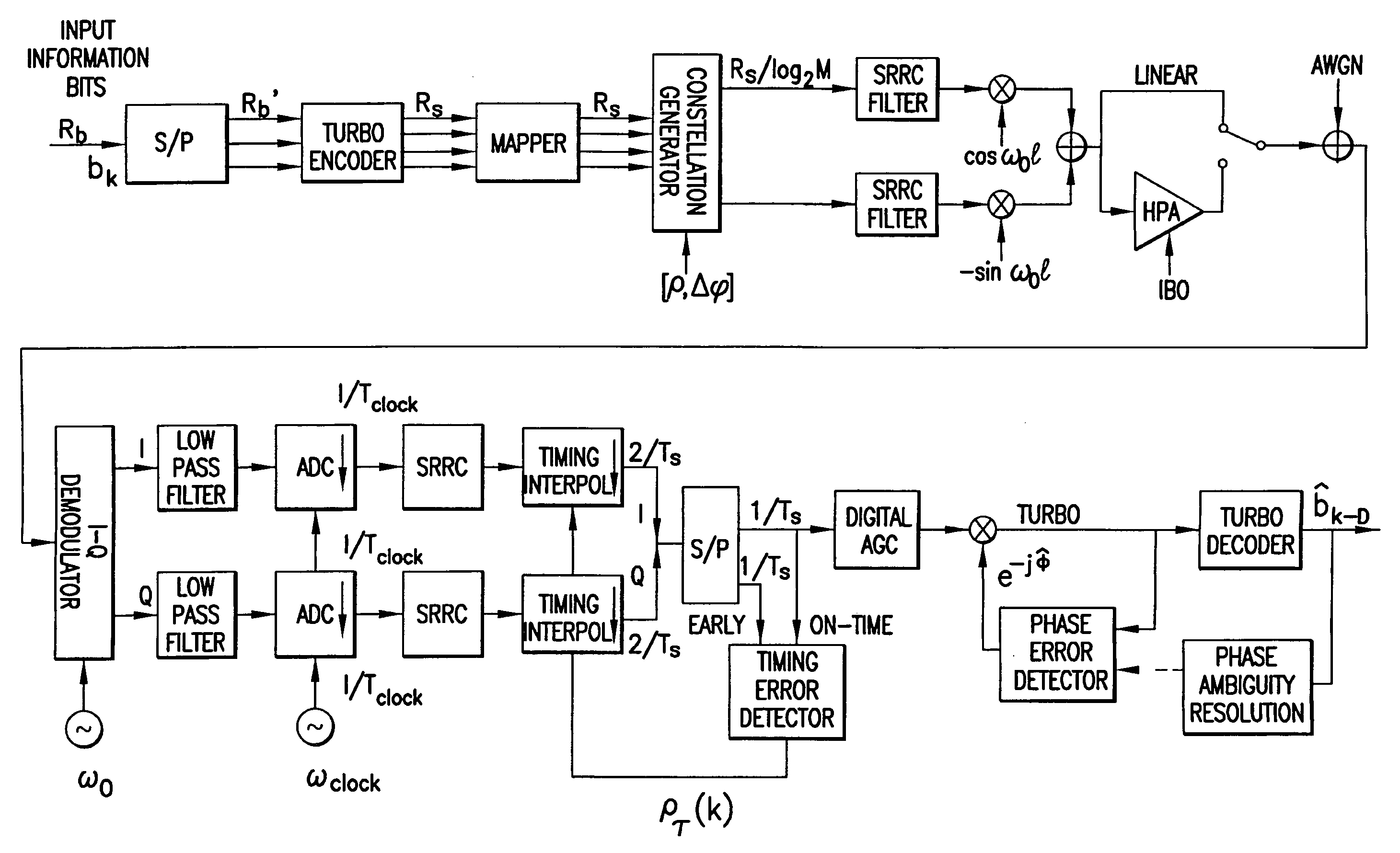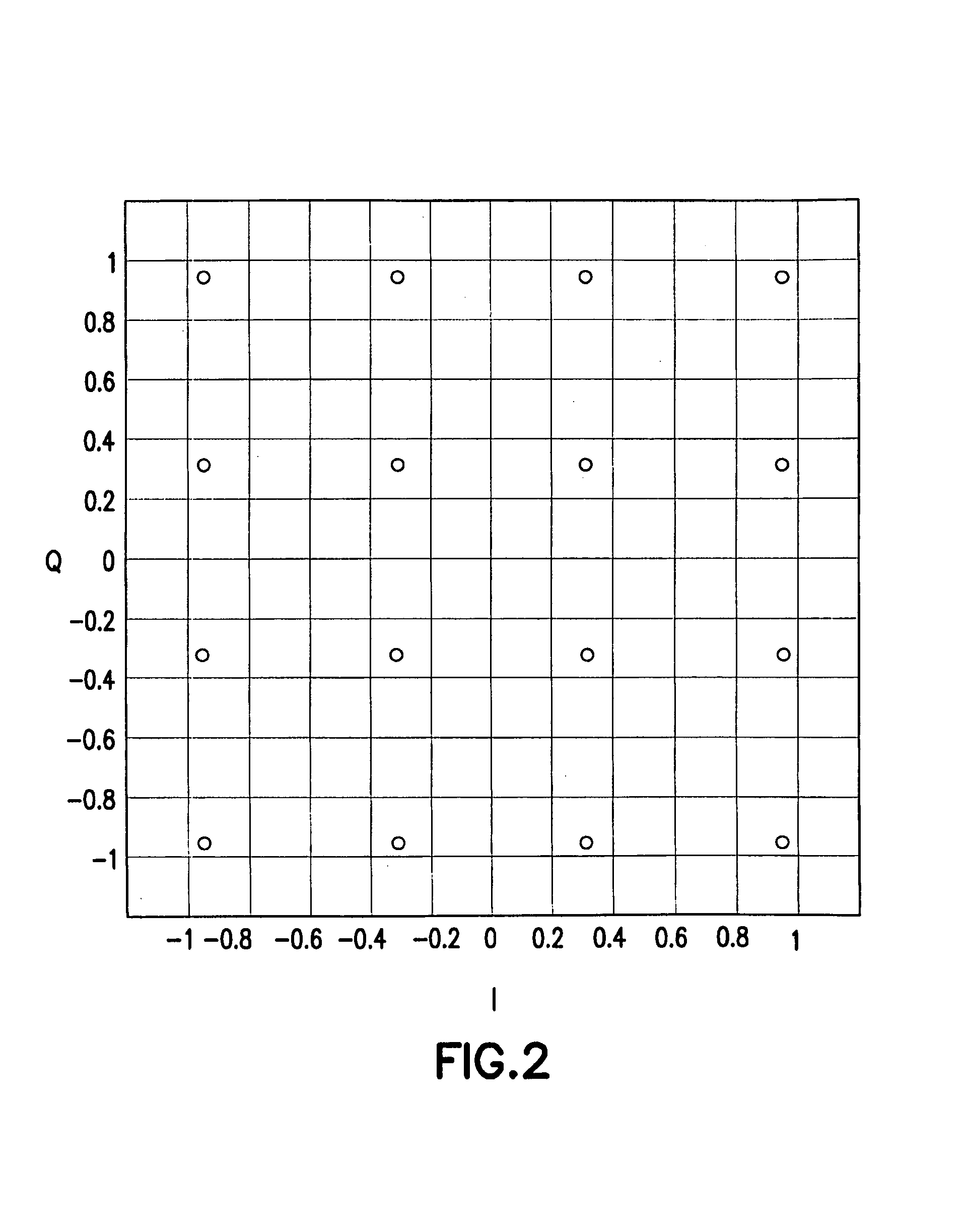Coded digital modulation method for communication system
a communication system and digital modulation technology, applied in the field of communication system codified digital modulation method, can solve the problems of removing some of its attractiveness, reducing the spectral efficiency of the widely used qpsk, and suffering from the non-linearity of satellite amplifiers, etc., and achieves low bit error rate floor, simple decoder implementation, and easy adaptability
- Summary
- Abstract
- Description
- Claims
- Application Information
AI Technical Summary
Benefits of technology
Problems solved by technology
Method used
Image
Examples
Embodiment Construction
[0043]The proposed method of the invention is based on an amplitude phase shift keying constellation as illustrated in FIG. 1 It is composed of two concentric rings of uniformly spaced points, respectively N1 and N2 in the inner and outer rings. In the example illustrated, N1=4 and N2=12. Obviously we have N1+N2=M=16. For N1=0 the constellation collapses to the well-known 16-PSK, from which incremental variations can be obtained by simply changing the value of N1. Compared to the conventional 16-QAM, the new modulation scheme has the advantages of being characterized by smaller envelope fluctuations and of simplifying the HPA pre-compensation function at modulator level (see later herein). For the sake of completeness, the conventional 16-QAM constellation is illustrated in FIG. 2. Unless otherwise stated, all the constellations shown herein are normalized in energy.
[0044]Possible extensions to higher order modulation (i.e. M>16) are straightforward, either by keeping the two rings ...
PUM
 Login to View More
Login to View More Abstract
Description
Claims
Application Information
 Login to View More
Login to View More - R&D
- Intellectual Property
- Life Sciences
- Materials
- Tech Scout
- Unparalleled Data Quality
- Higher Quality Content
- 60% Fewer Hallucinations
Browse by: Latest US Patents, China's latest patents, Technical Efficacy Thesaurus, Application Domain, Technology Topic, Popular Technical Reports.
© 2025 PatSnap. All rights reserved.Legal|Privacy policy|Modern Slavery Act Transparency Statement|Sitemap|About US| Contact US: help@patsnap.com



